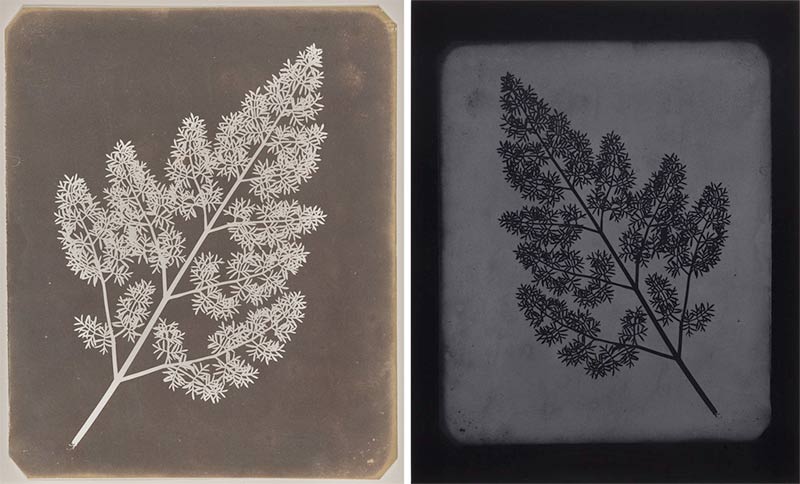
À primeira vista, as fotografias tiradas no século XIX podem parecer relíquias desbotadas de uma época cada vez mais distante e esquecida, mas persistem em inspirar, desafiar e ressoar nos artistas de hoje.
Nineteenth-Century Photography Now, em exibição de 9 de abril a 7 de julho de 2024 no Getty Center, oferece novas perspectivas sobre a fotografia antiga, olhando através das lentes de artistas contemporâneos que respondem diretamente a seus temas históricos e assuntos.
“Esta exposição oferece uma oportunidade de conectar os visitantes com algumas das primeiras fotografias da coleção do Museu, agora com quase dois séculos de idade, através das respostas de criadores contemporâneos”, afirma Timothy Potts, Maria Hummer-Tuttle e Robert Tuttle Diretor do J. Museu Paul Getty. “A capacidade reveladora da fotografia antiga de capturar imagens do mundo que nos rodeia ainda ressoa nos profissionais de hoje, e as pontes entre a fotografia do passado e do presente são tão ativas e relevantes como sempre foram.”
Organizada em torno de cinco temas, que remontam aos primórdios do meio, Identidade, Tempo, Espírito, Paisagem e Circulação, esta exposição explora fotografias do século XIX através do trabalho de 21 artistas contemporâneos. Refletindo a inventividade dos primeiros profissionais, bem como os aspectos históricos mais perturbadores da sua época, estes intercâmbios entre as primeiras décadas do meio e as mais recentes convidam-nos a reimaginar a fotografia do século XIX enquanto exploramos as suas complexidades.
No seu trabalho, os artistas Daido Moriyama, Hanako Murakami e Carrie Mae Weems relembram a invenção da fotografia para transmitir uma ideia de como esta descoberta revolucionária mudou a percepção das pessoas.
Como ainda acontece hoje, os temas mais populares para a câmera no século XIX eram as pessoas. Nas galerias focadas em Identidade, Paul Mpagi Sepuya e Myra Greene respondem à complexa história do retrato fotográfico enquanto Laura Larson, Stephanie Solinas e Fiona Tan investigam as pseudociências do século XIX e como elas reforçaram os estereótipos e os sistemas de identificação que nos impactam hoje. .
A fotografia e o tempo estão inextricavelmente ligados desde que os primeiros inventores lutaram para fixar permanentemente um momento fugaz numa folha de papel. Esta seção inclui trabalhos de Lisa Oppenheim e Liz Deschenes explorando as inovações técnicas dos fotógrafos do século XIX e as maneiras pelas quais o meio afeta nossa percepção do tempo.
O gênero da fotografia do Espírito surgiu da obsessão vitoriana pela morte na Europa e na América do Norte. Os fotógrafos exploraram a capacidade de manipular imagens fotográficas, empregando exposições múltiplas e fotografia encenada para criar cenas de outro mundo ou para convocar entes queridos de volta dos mortos. Nesta seção, Khadija Saye e Lieko Shiga respondem às possibilidades que a fotografia espiritual oferece na representação do invisível.
Os fotógrafos do século XIX não mediram esforços para fazer imagens de paisagens remotas. Pesquisas patrocinadas pelo governo e programas expedicionários empregaram a câmera para justificar a expansão e registrar os conflitos militares resultantes. Mark Ruwedel, Michelle Stuart e An-My Lê revisitam algumas dessas mesmas paisagens históricas e oferecem novas que aproximam o passado do nosso presente.
Em meados do século XIX, milhares de fotografias circulavam em todo o mundo, resultado da capacidade dos fotógrafos de reproduzir a mesma imagem várias vezes. Imagens de eventos históricos, destinos turísticos e expedições antropológicas fizeram o mundo parecer mais acessível, mas com o tempo e a distância, eles se desconectaram de seus contextos originais. Nesta seção, aparecem fotografias antigas ao lado de projetos que tornam presentes essas ausências históricas. Wendy Red Star, Stephanie Syjuco, Ken Gonzales-Day e Andrea Chung recuperam o que foi perdido, destacando os efeitos residuais da fotografia do século XIX no nosso conhecimento atual das culturas e histórias globais.
“Através das obras destes artistas contemporâneos visionários, a fotografia do século XIX não está desbotada e morta, mas muito viva, um material ativo que nos permite repensar o meio e a nossa relação com ele”, diz Karen Hellman, curadora da exposição.
Nineteenth-Century Photography Now tem curadoria de Karen Hellman, ex-curadora associada do Departamento de Fotografias. Carolyn Peter, curadora assistente do Departamento de Fotografias do Museu J. Paul Getty, atuou como curadora organizadora com a assistência de Claire L’Heureux, ex-estagiária de pós-graduação do Departamento de Fotografias e Antares Wells, assistente de curadoria.
A programação relacionada inclui Quem ou o que está faltando na fotografia do século XIX?, uma discussão com os artistas Laura Larson, Wendy Red Star e Paul Mpagi Sepuya em uma conversa sobre suas práticas artísticas e como eles estão se envolvendo e criticando a fotografia do século XIX. século, e Art Break: A natureza precária da fotografia, da sociedade e da vida, 6 de junho, 12h. O artista Phil Chang conversa com a curadora Carolyn Peter sobre sua série “Unfixed” em exibição na Nineteenth-Century Photography Now e como uma crise econômica e uma pandemia o inspiraram a criar fotografias que desaparecerão intencionalmente para expressar a fragilidade dos sistemas sociais e da vida.
(com google translator)

Herbaria (detail), 2021, from the series Pileups, Stephanie Syjuco. Hand-assembled pigmented inkjet prints on Hahnemühle Baryta. Getty Museum. © Stephanie Syjuco
Introduction
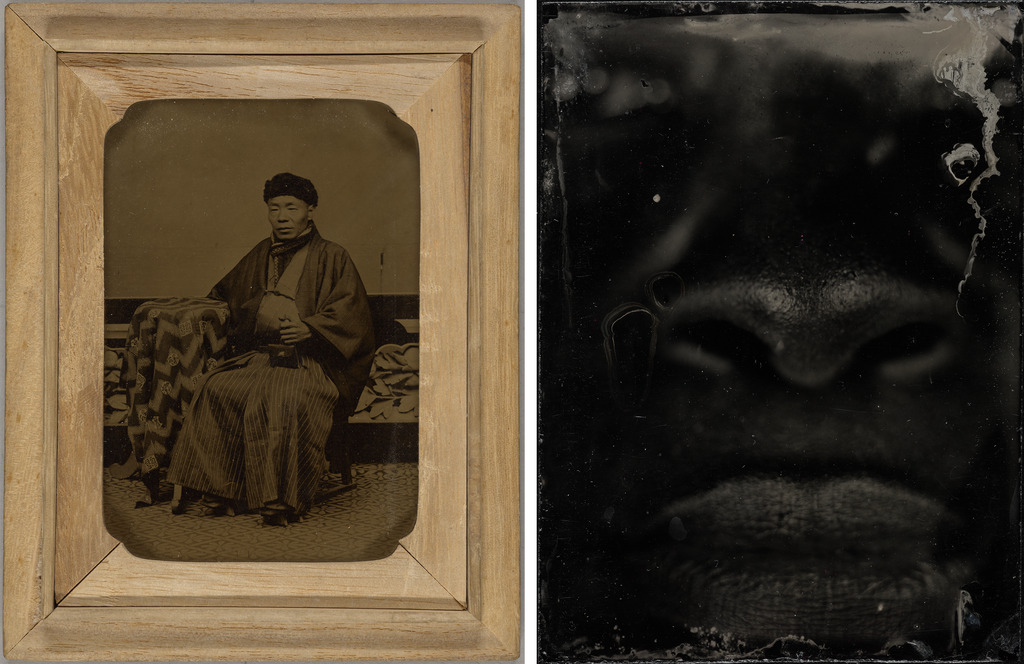
The earliest photographs—often associated with small, faded, sepia-toned images—may seem to belong to a bygone era, but many of the conventions established during photography’s earliest years persist today. Organized around five themes dating back to the medium’s beginnings, this exhibition explores nineteenth-century photographs through the work of twenty-one contemporary artists. Reflecting the inventiveness of early practitioners as well as the more disturbing historical aspects of their era, these interchanges between the first decades of the medium and the most recent invite us to reimagine nineteenth-century photography while exploring its complexities.
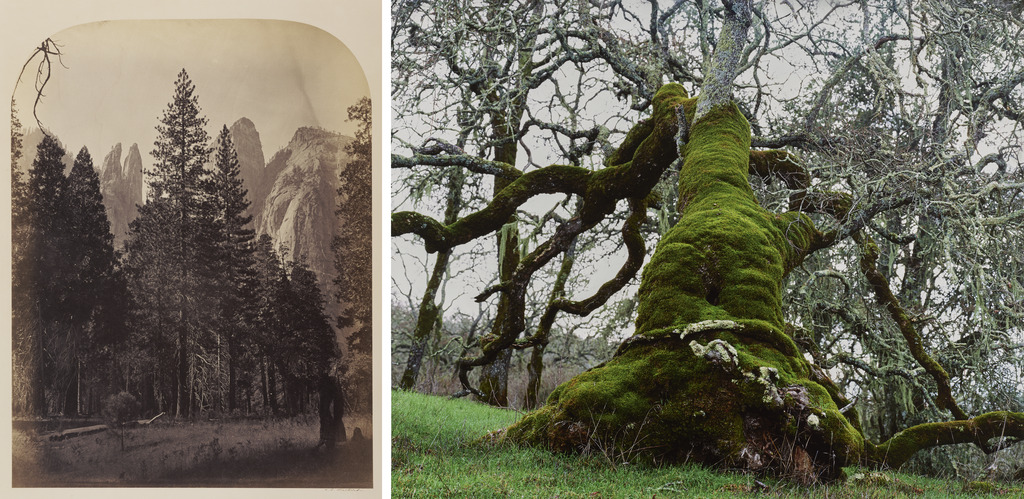
Identity
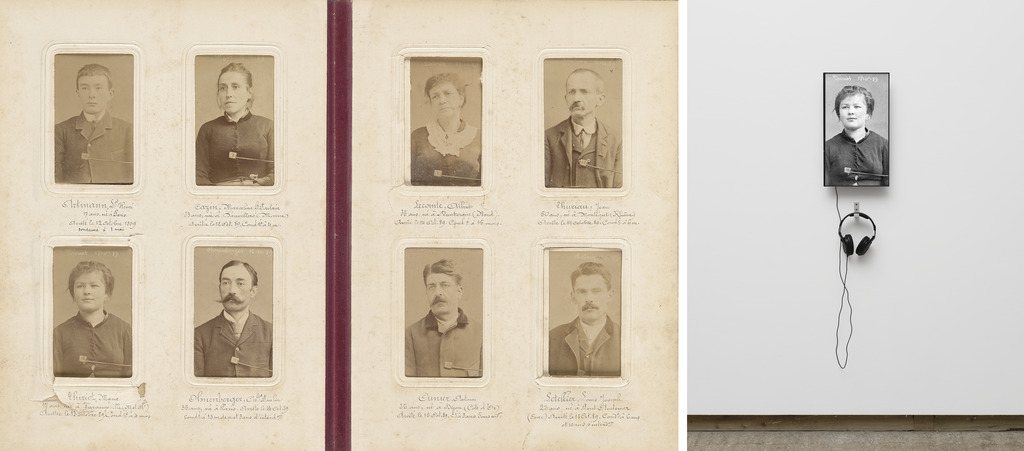
As is still the case today, the most popular subjects for the camera in the nineteenth century were people. Early commercial portrait photographers set up studios and established standards for posing and props, serving clients who eagerly shared these prized images with family and friends. Other portraits of the time, however, such as the mug shot and studies of female “hysterics,” reinforced questionable forms of objectification. Paul Mpagi Sepuya and Myra Greene respond to the complex history of photographic portraiture. Fiona Tan, Laura Larson, and Stéphanie Solinas investigate the nineteenth century pseudosciences that relied on the perceived accuracy of the new medium.
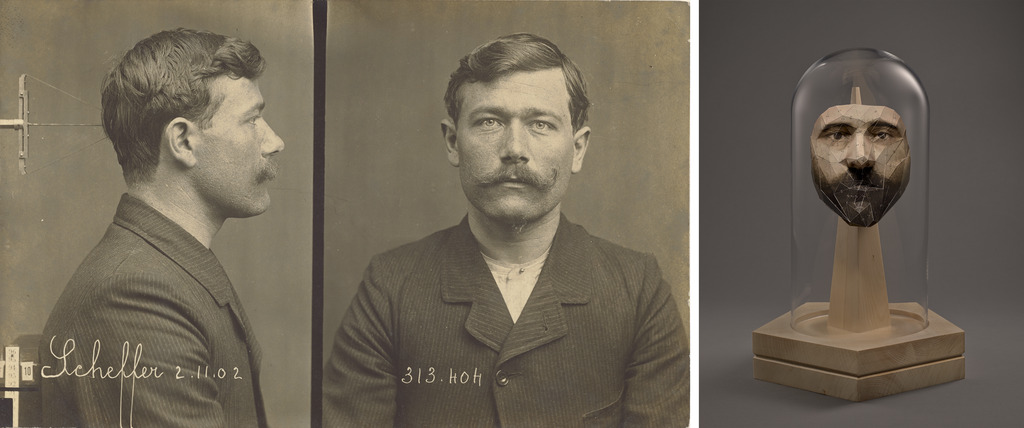
Time
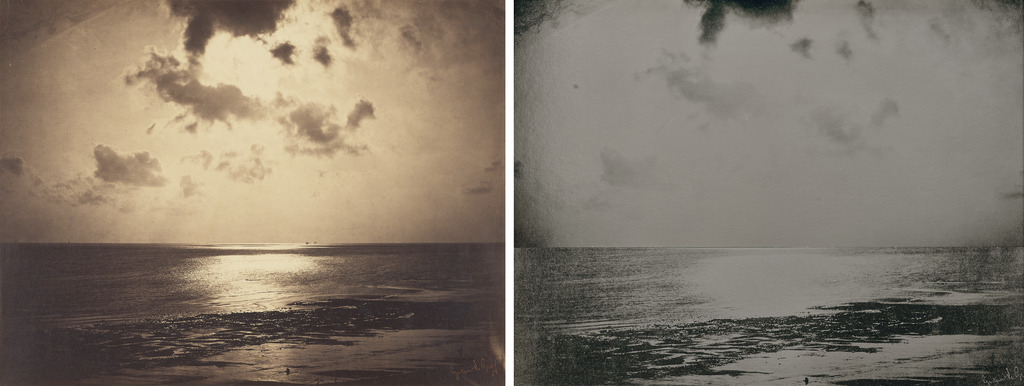
Photography and time have been inextricably linked ever since early inventors such as William Henry Fox Talbot struggled to permanently fix a fleeting moment on a sheet of paper. The development of the camera coincided with new discoveries about how we perceive an instant in time or an object in motion, and people praised photography for its ability to “stop time” and record what the unaided eye could not see. Lisa Oppenheim and Liz Deschenes respond to nineteenth century photographers’ technical innovations and the ways in which the medium affects our perception of time. Phil Chang and Hiroshi Sugimoto address the fate of photographs across minutes or even centuries.
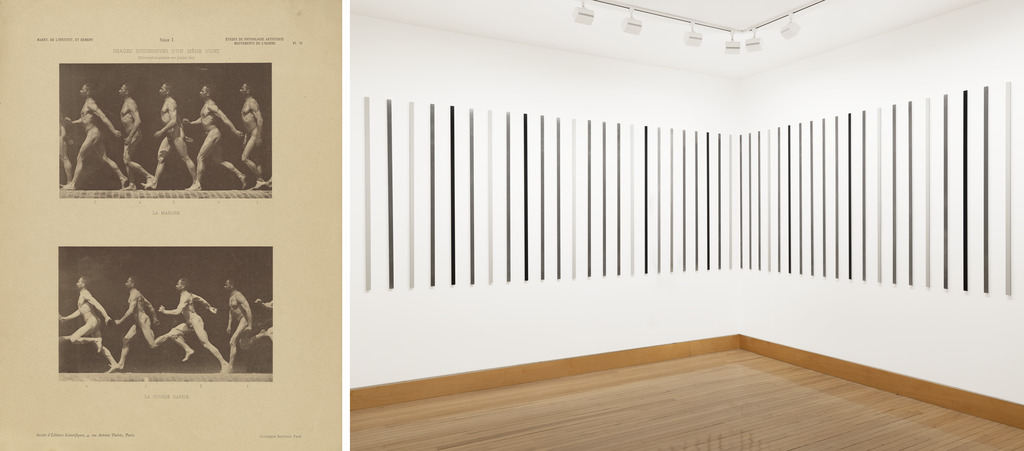
Spirit
The genre of spirit photography—which used photographic tricks to insert ghostly figures among the living—emerged during the nineteenth century from the Victorian obsession with death, séances, and mediums in Europe and North America and from the losses of the Civil War in the United States. Photographers exploited the ability to manipulate photographic images, employing multiple exposures and staged photography to create otherworldly scenes or to summon loved ones back from the dead. Khadija Saye and Lieko Shiga respond to the possibilities that spirit photography offers in rendering the unseen.
![Mrs. Swan, 1869–78, William H. Mumler. Albumen silver print. Getty Museum; Nak Bejjen [Cow’s Horn], 2017-18, from the series in this space we breathe, Khadija Saye. Silkscreen print. Getty Museum, Purchased with funds provided by the Photographs Council. © Estate of Khadija Saye](https://www.getty.edu/art/exhibitions/19_century_now/images/2_7_GMR_2038_012.jpg)
Landscape
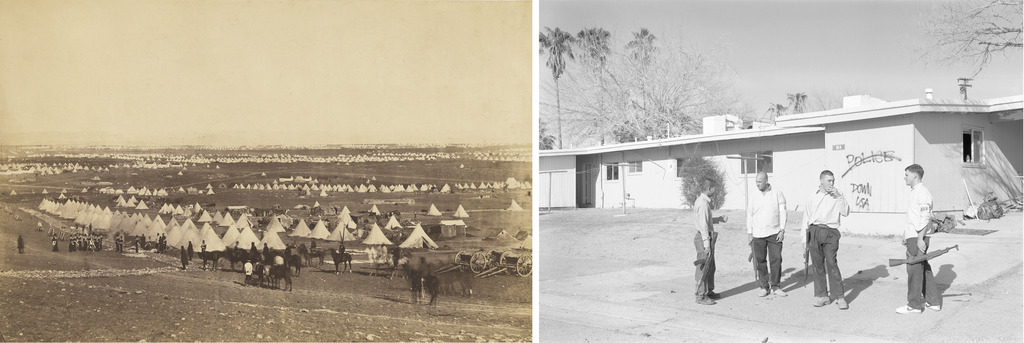
Nineteenth-century photographers went to great lengths to make images of remote landscapes, which required traveling with large format cameras, glass plates, and chemicals. Ideological forces drove many of these journeys, with the ultimate goal of imperial expansion through industrial development and war. Government sponsored surveys and expeditionary programs employed the camera to justify the expansion and to record the resulting military conflicts. Mark Ruwedel, Michelle Stuart, and An-My Lê re-envision some of these same historical landscapes and offer up new ones that bring the past closer to our present.
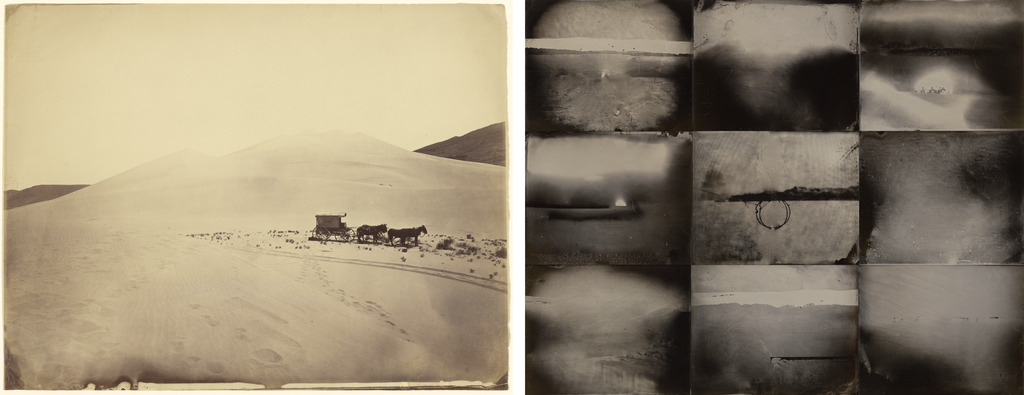
Circulation
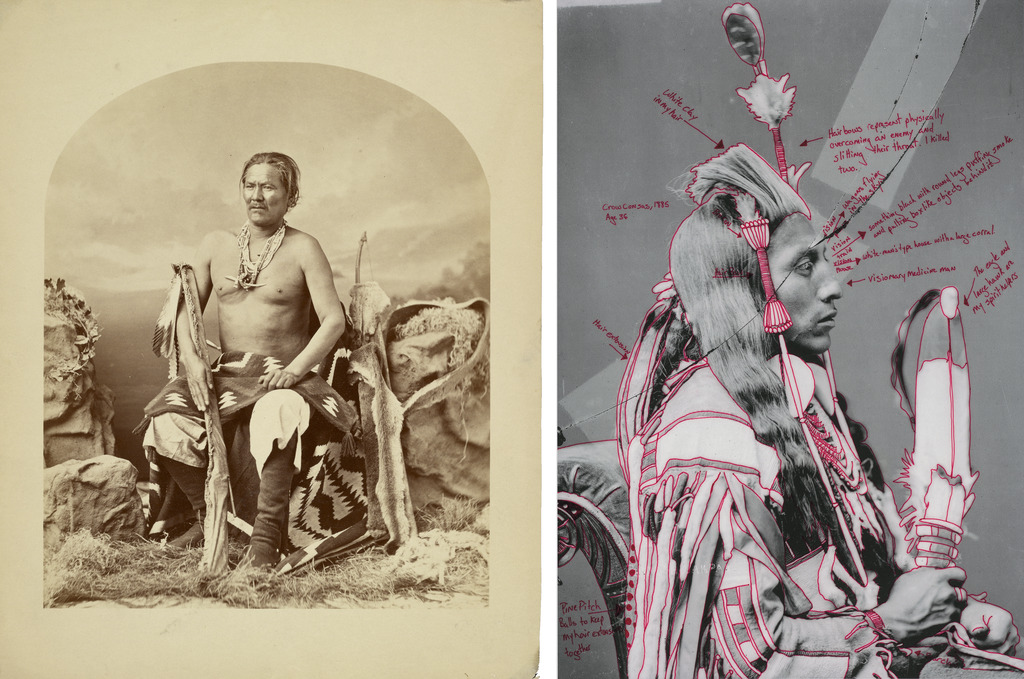
By the middle of the nineteenth century, thousands of photographs were in circulation worldwide, the result of photographers’ ability to reproduce the same image multiple times. Pictures of historical events, tourist destinations, and anthropological expeditions made the world seem more accessible, but with time and distance, they became disconnected from their original contexts. Many eventually ended up in archives (including at Getty). Early photographs appear next to projects that make these historical absences present. Wendy Red Star, Stephanie Syjuco, Ken Gonzales-Day, and Andrea Chung recover what has been lost, calling out the residual effects of the nineteenth-century photograph on our present knowledge of global cultures and histories.
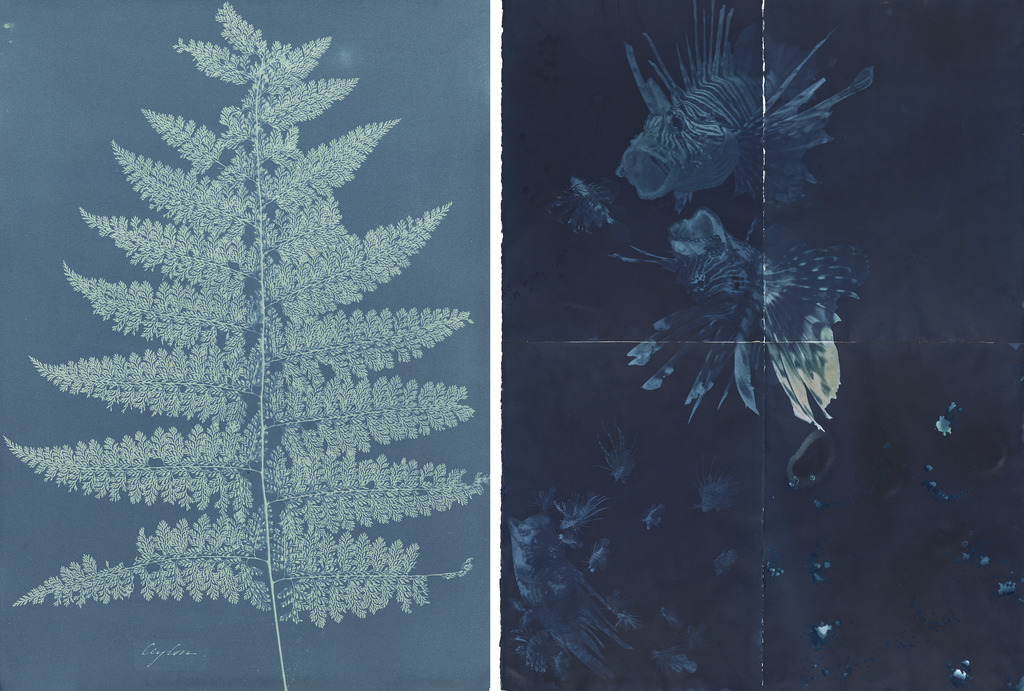
https://www.getty.edu/art/exhibitions/19_century_now/explore.html